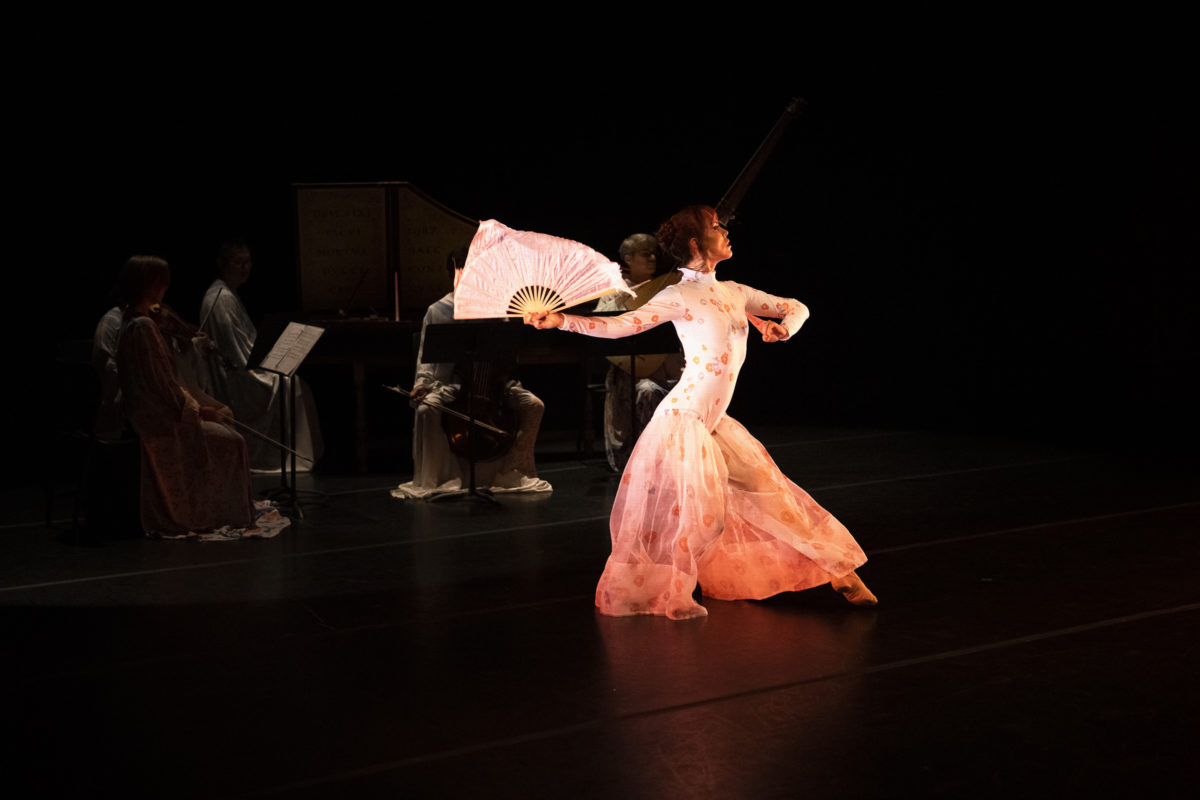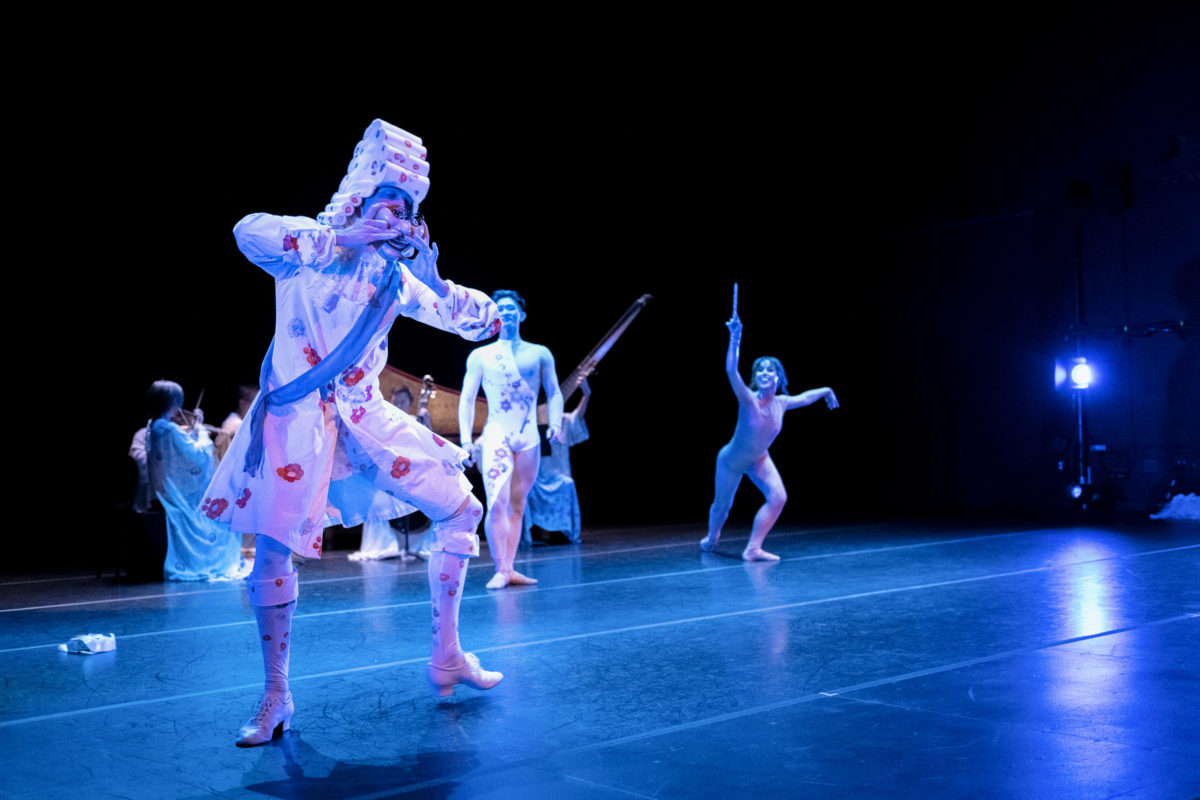A contemporary reinterpretation of an 18th century ballet at MIT reveals the fragility of orientalist fantasies
A faraway island. An evil magician. A prince transformed into a teapot. A princess on a rescue mission. When the first performance of the Ballet des Porcelaines was staged at the Chateau de Morville in 1739, the orientalist fairytale seemed innocent enough. However, when the art historian Meredith Martin encountered the lost libretto in the archives of the Bibliothèque Nationale de France, she recognized a troubling subtext hidden within the storytelling. As an expert in the 18th century craze for rooms filled floor-to-ceiling with porcelain, Martin was well aware of the proto-colonial European quest to possess the secret of porcelain production, a technology closely guarded by Chinese artisans. The light-hearted divertissement of the Ballet de Porcelaines could be read as an allegory of extraction, a narrative of the European obsession with the elusive “white gold.”
What is the place of such a ballet in contemporary culture – could the controversial subcurrents hold any relevance for a multi-racial audience? Nothing survives of the original set design, costumes, or details of the performance, but Martin saw the potential of the score and the manuscript. To engage in an historically accurate reconstruction would risk reinforcing harmful racial stereotypes and exoticization of Asian cultures, but a creative reimagining could critique and connect the present and the past. Martin proposed the idea to the choreographer and activist Phil Chan, who conceived of a restaging of the ballet which would center Asian American experience and challenge the racial typecasting of the original performance.
Premiered at the Metropolitan Museum of Art in 2021, the Ballet des Porcelaines has traveled to leading cultural institutions in the United States and Europe, and was recently staged at MIT with the support of a 2022 Visiting Artist Grant from the MIT Center for Art, Science & Technology (CAST). “MIT might be known for its emphasis on STEM, but the arts, humanities, and social sciences are also central to our undergraduate curriculum,” said Jeffrey Ravel, a professor of history at MIT and a specialist in 18th century French theater and political culture. “Our students are primed for artistic events like these, and dance is extremely popular among the MIT community. Most importantly, the performance is part of our ongoing campus conversations about diversity, equity, and inclusion, investigating the historical context of the pervasive issues that affect cultural production today.”

Ethics and Innovation
In the 1739 performance of the Ballet des Porcelaines, the villain of the tale is identified as Chinese: an evil magician who transforms the inhabitants of the island into porcelain. It is the task of the princess to break the spell and bring the prince back to life, as though reverse-engineering the porcelain production process. Kristel Smentek, a professor in the department of architecture at MIT, whose work focuses on 18th century visual culture and European encounters with Asian art, collaborated with Ravel to stage a series of discussions and class visits related to the complex context of the performance. In a Q&A session hosted by MIT, Phil Chan shared his vision for the Ballet des Porcelaines and the driving force of his work as a cultural practitioner. “It’s about questioning how we can shift ballet from a Eurocentric art form. What does that look like, and how can this art form be bigger and for everybody – especially in our multiracial society, and in a diverse city like Boston.”
Chan is the cofounder of Final Bow for Yellowface, an organization dedicated to eliminating racist and offensive portrayals of Asians in contemporary ballet. He connected with Martin during a fellowship at the NYU Center for Ballet and the Arts, and both recognized a key paradox at the heart of the performance: the politically provocative subject matter was intertwined with the persistent mystery and allure of porcelain, as well as the beauty of ballet itself. The staging of the Ballet des Porcelaines invites the audience to dwell in this paradox. Performed at MIT by members of the Oakland Ballet Company, led by artistic director Graham Lustig, the ballet casts Asian American dancers in the role of the prince and the princess, and reimagines the Chinese magician as a European collector haunted by his obsession with porcelain. The choreography combines baroque and contemporary dance with Chinese classical and fan dancing, and the costumes – created by Korean-American artist and fashion designer Harriet Jung – are inspired by the Japanese Kakiemon and French Chantilly porcelain that was popular among 18th century European collectors. Dongsok Shin, a harpsichordist and early music specialist, serves as musical director alongside Leah Gale Nelson, and composer Sugar Vendil disrupts the sedate baroque score with experimental elements of breaking porcelain.

Critique and Creativity
By bringing visiting artists to the MIT campus and integrating questions of criticality and creativity as part of the curriculum, CAST actively stimulates research and innovation. The Ballet des Porcelaines introduces controversial topics that are directly relevant to a community driven by the advancement of emerging technologies; at what point does the pursuit of technological discovery become potentially harmful, and how can the human instinct for beauty also be inclusive?
“When Europeans discovered the secret of hard-paste porcelain in the early 18th century, they made a lot of things in the chinoiserie style,” said Chan. “Stereotypical Asian figures appear on many a vase and jar, and there’s a history of associating the Asian community with objects and commodities – when you transform someone into an object, how does that take away their humanity? Where does that lead us in terms of seeing each other with greater nuance?”
Just as an algorithm cannot be free from human bias, so might a dance or a vase serve to propagate harmful and limiting assumptions; the task is both to critique and generously investigate what it means to create. Rather than turning away from a problematic past, the Ballet des Porcelaines seeks to deconstruct and reclaim a rich historical artifact, contributing to a process of continual cultural evolution. The goal, as Chan expresses it, is to support ways of making that are “deeply generative for the future.”
The work was presented by the MIT Center for Art, Science & Technology (CAST), MIT School of Humanities, Arts, and Social Sciences (SHASS), MIT Music and Theater Arts, MIT History, MIT Global Languages, and the MIT Department of Architecture, in collaboration with the Peabody Essex Museum.
The full list of names of the Ballet des Porcelaines creators and performers can be found here.
Article produced by MIT CAST Communications
Article written by Matilda Bathurst
Editorial direction by Leah Talatinian
Photography by Sham Sthankiya

